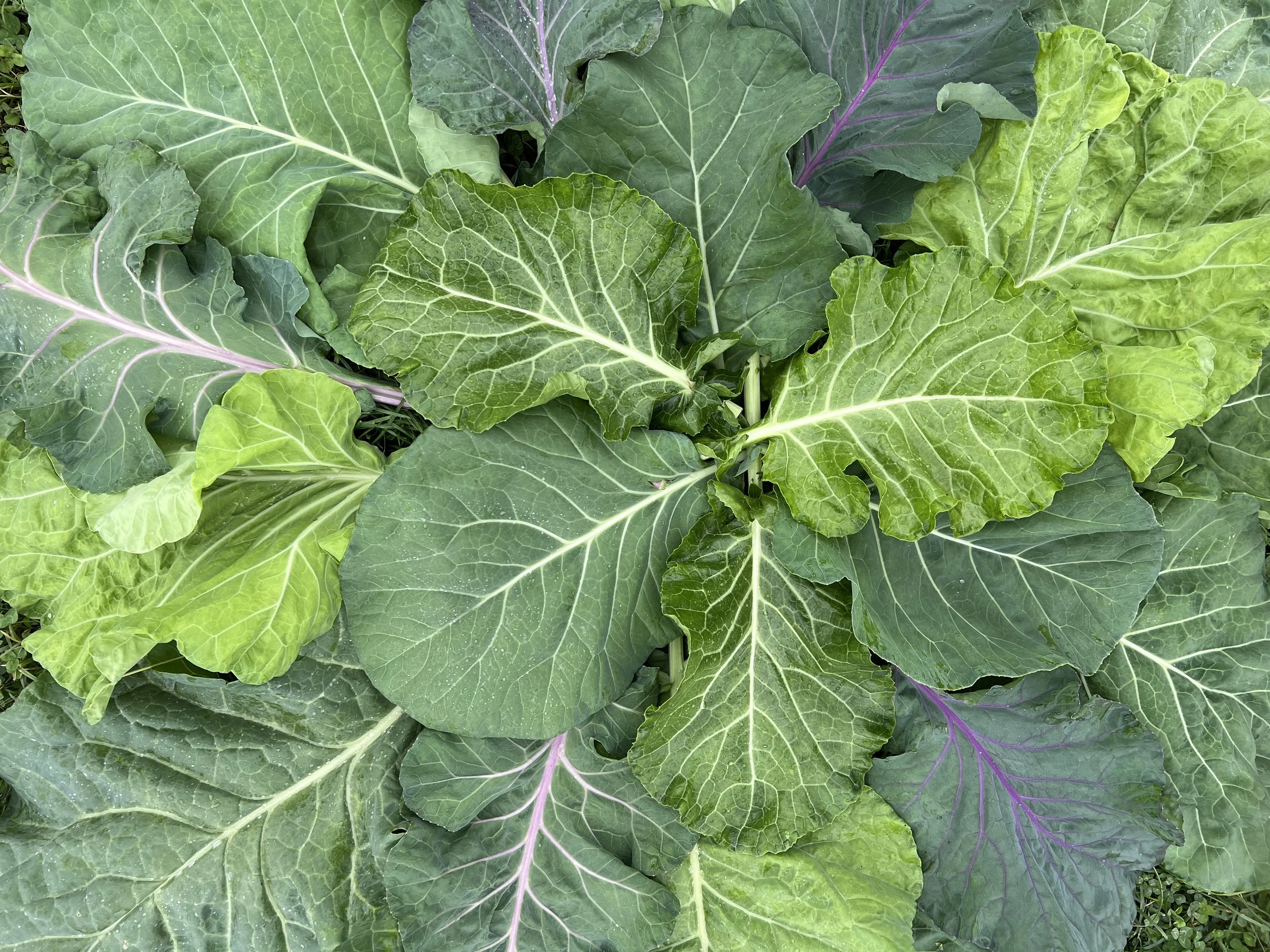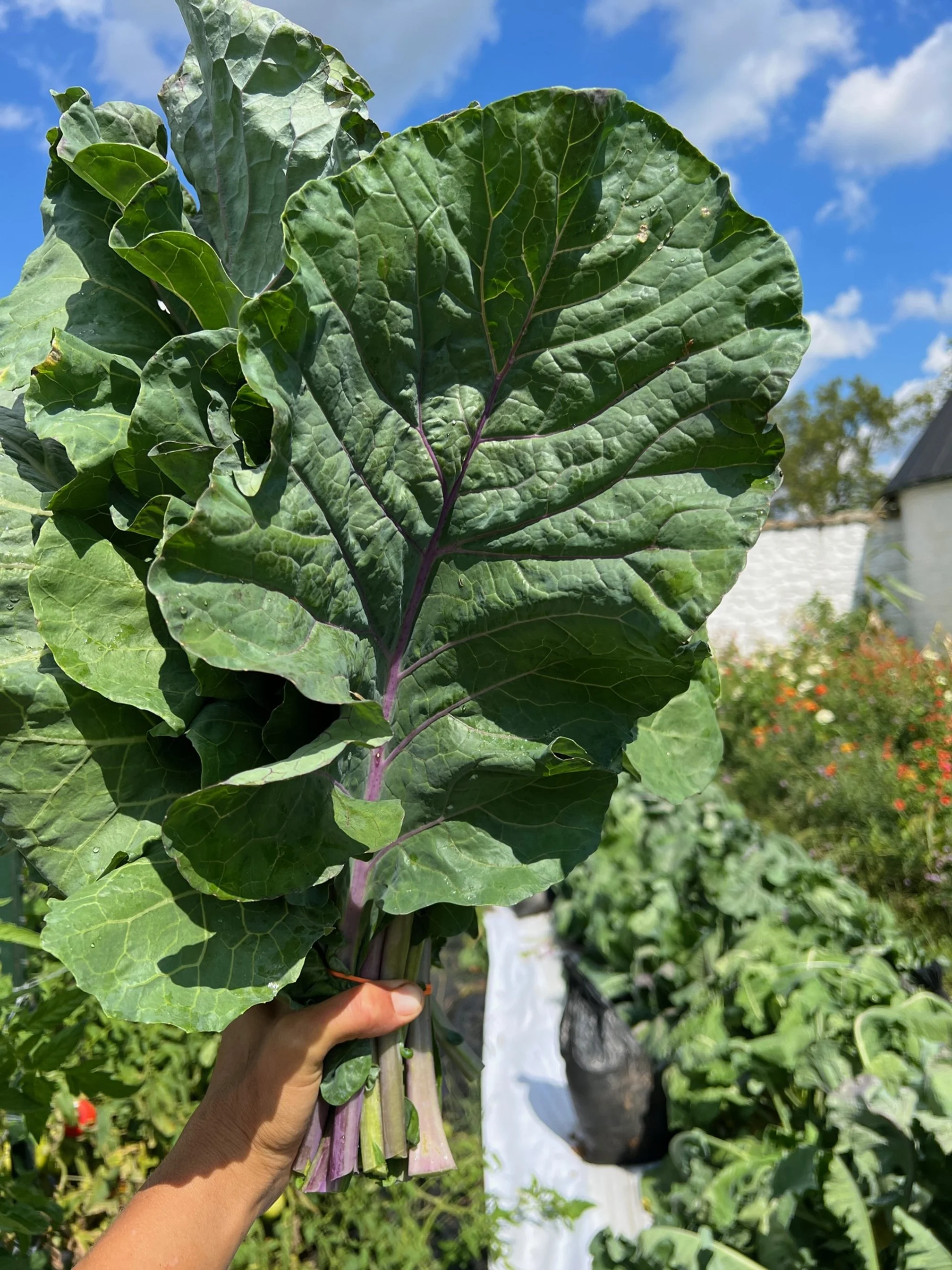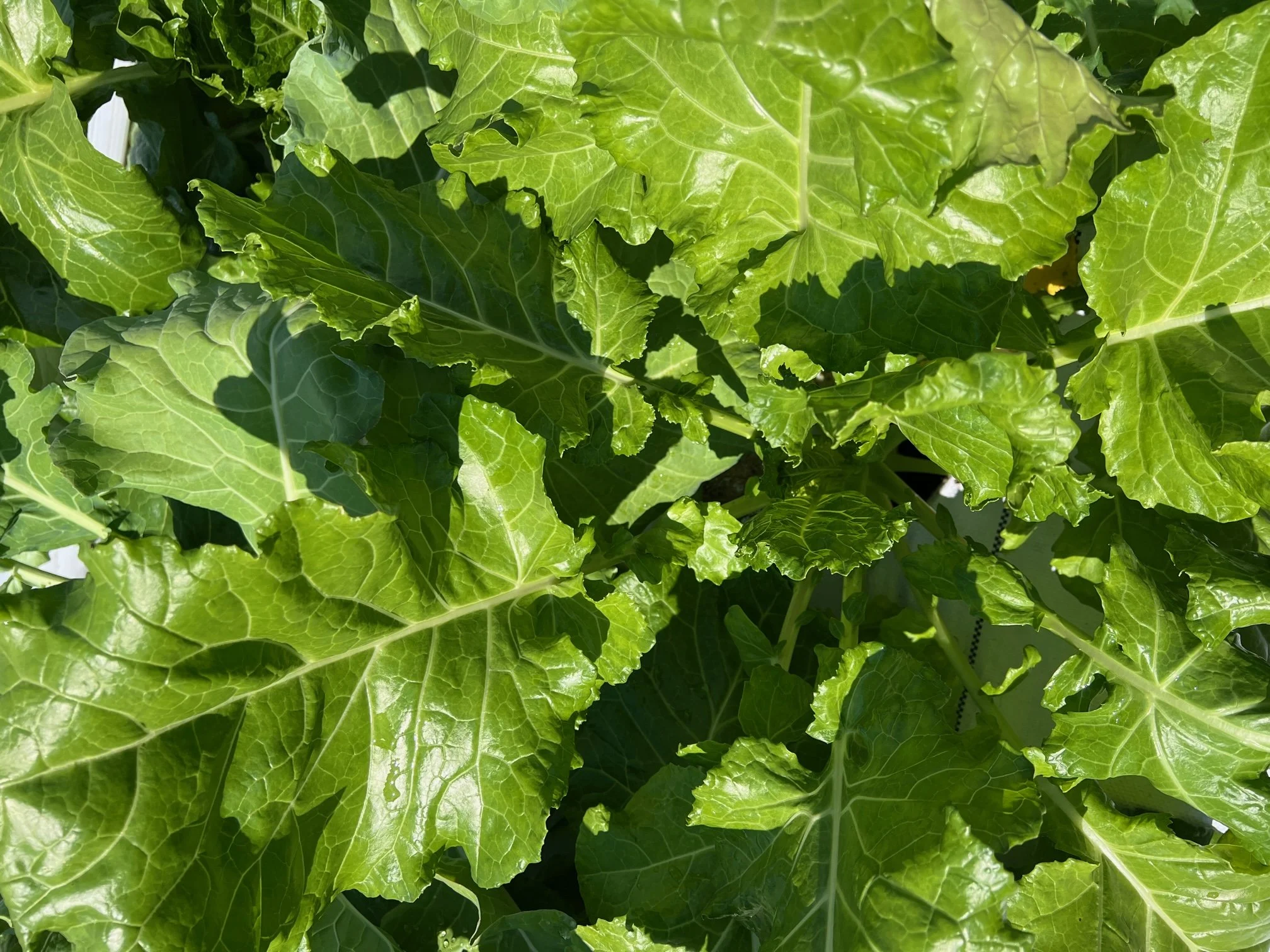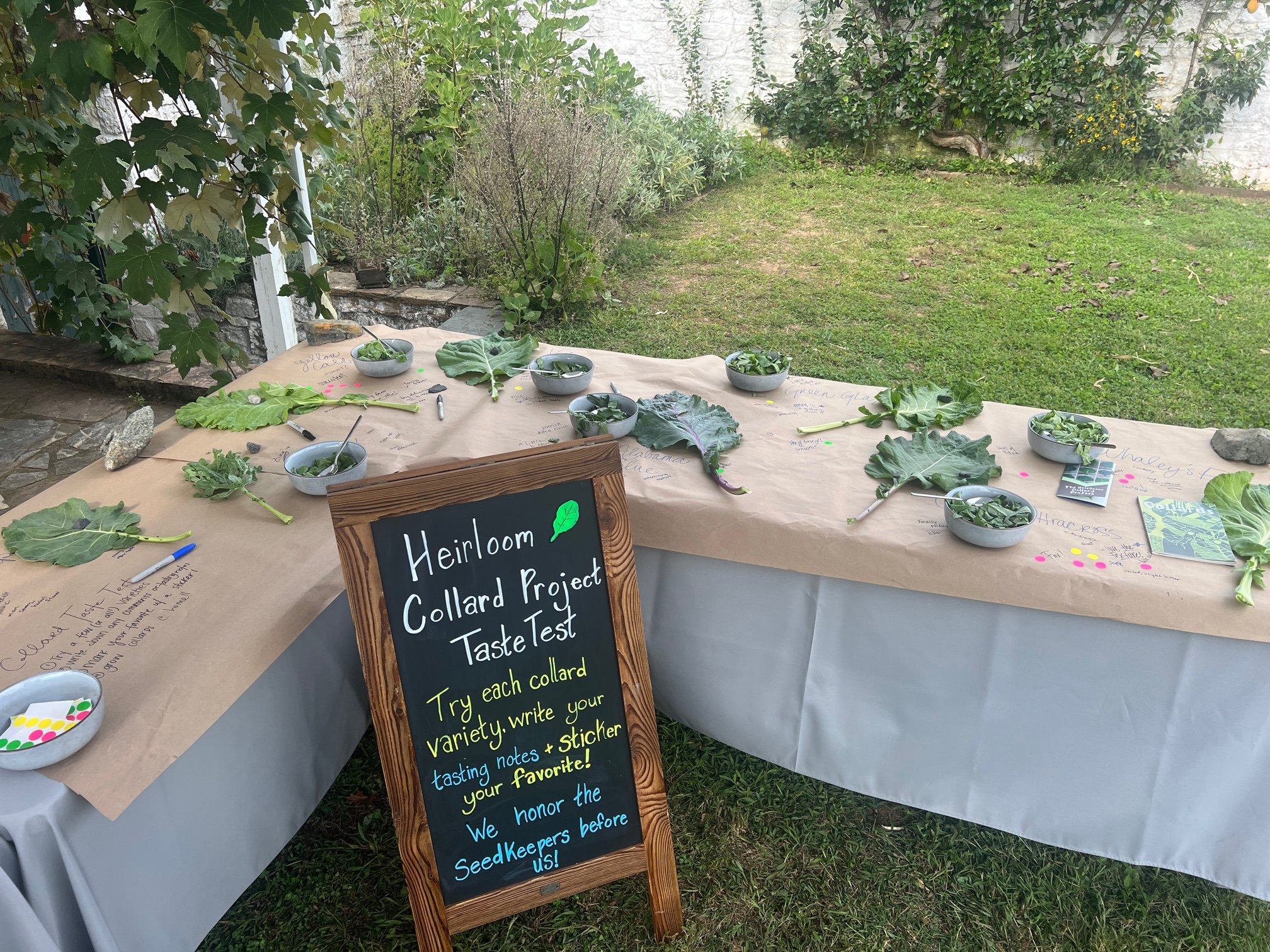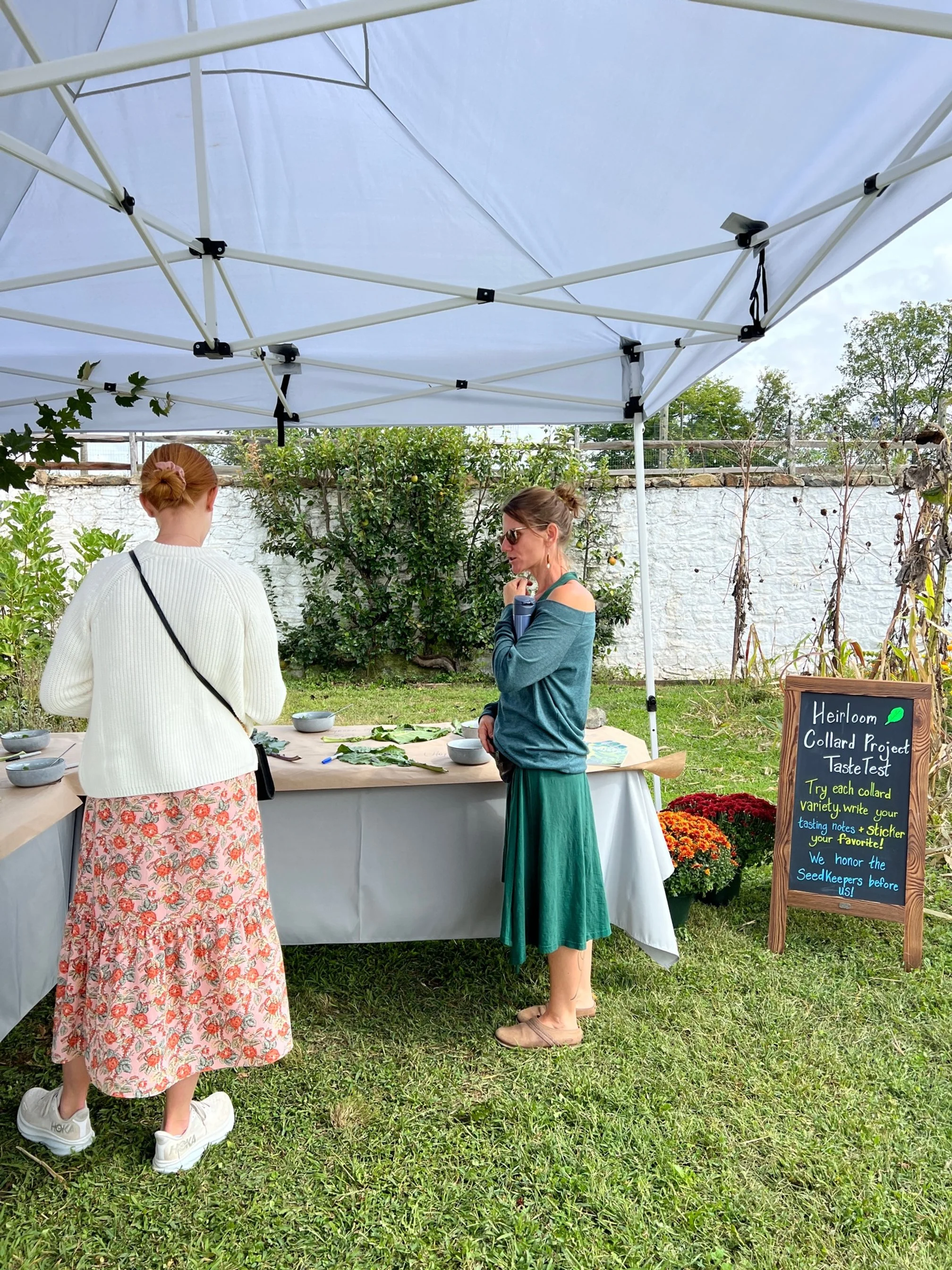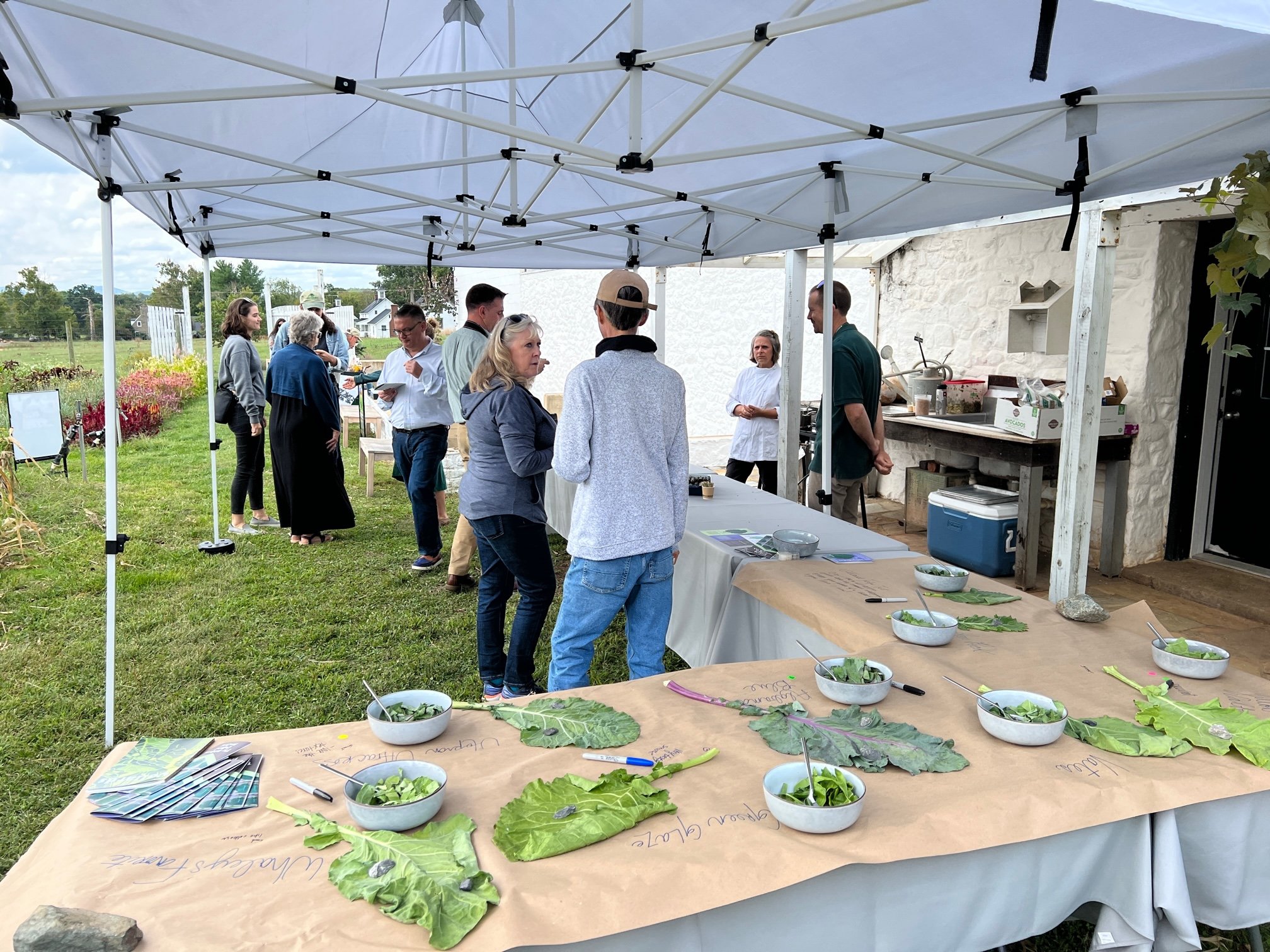A Crop to Treasure
OSGF
While the cool autumn air has returned, we are taking a look back at the height of summer. It’s at this time that our Biocultural Conservation Farm (BCCF) was getting ready to plant collards grown as part of a collaboration with the Heirloom Collard Project (HCP). Read on to learn about the history of collards in the US and the HCP, while hopefully gaining a new appreciation for these overlooked leafy greens.
This past summer temperatures were sweltering, reaching to the 90s with heat indexes pushing up into the 100s. In those conditions it’s understandable to long for some relief and dream of cooler days. It was during this heat wave that our Biocultural Conservation Farm Team was already making preparations for fall and winter, planting out the cool season crop beds. Now, with the hot summer behind us, the beds are full of collards grown from seed provided by the Heirloom Collard Project.
The Heirloom Collard Project (HCP) began in 2016 as a collaborative effort between Seed Savers Exchange (SSE) and Ira Wallace of Southern Exposure Seed Exchange (SESE). For the project, they requested seed for over 60 varieties of collards from the USDA to be trialed.
These seeds were collected by Ed Davis, John Morgan, and plant breeder for the USDA, Mark Farnam. Over the course of seven years during the ‘80s and early ‘90s, the group drove throughout the Southeastern US in search of heirloom varieties and ended up accessioning over 90 different heirloom collards. Many of these varieties were previously unknown and were found predominantly in South Carolina and the ‘collard belt’ of Eastern North Carolina. In that time, they also connected with people that grew them from saved seeds, who shared their stories and cultural connections to the crop. Through those conversations the group learned that many of these growers had no one to pass their saved seeds along to. Upon learning about this dilemma, Ira Wallace, who is known as the godmother and matriarch of the HCP, led the charge in requesting and trialing these heirloom collards at SESE so that the plants, and their cultural legacy didn’t die out.
The Biocultural Conservation Team first connected with the HCP through member Chris Martin of The Utopian Seed Project in the spring of 2022. As luck would have it, another member and lead organizer of the HCP, Melissa DeSa arrived at Oak Spring later that fall as a 5-week Interdisciplinary Resident. During her residency, the Farm Team was able to connect with Melissa and investigate the role the BCCF could play in the project.
“Our hope was to showcase eight different heirloom varieties that could not only be used to feed guests onsite, but also serve as an opportunity to connect with our surrounding community through highlighting the work of the Heirloom Collard Project and celebrating the joys of growing, cooking and eating collards.”
Growing the different collards took some planning. In winter of this year, eight beds were planned, approximately 4’ x 50’ in size, one for each variety. The purchased seed was sown in early July by our Greenhouse Manager, Natalie Carver and planted into the field in August. Each bed has two rows, making up a total of 50 plants. Seven of the eight varieties were sourced from Southern Exposure Seed Exchange, the favored seed company of the BCCF team. Alabama Blue seed is the one exception, which was harvested from existing plants in the spring of 2021, though the original stock seed was purchased from SESE.
BCCF Varieties: Alabama Blue, Champion, Green Glaze, Hen Peck, Utopian UltraCross, Vates, Whaley’s Favorite and Yellow Cabbage Collards
Michael Twitty also shares that this is one of the oldest known varities, dating back to late 18th century.
When asked which of the eight is her favorite, Christine shared that it’s hard to pick just one but Green Glaze is a showstopper right now. This is also a favorite of foodways historian and researcher Michael Twitty who says it’s, “the most beautiful of American old variety collard greens.” Christine also shares that “the leaves of Green Glaze Collards are deeply green and have a beautiful waxy sheen to them, a characteristic unique to this variety. They seem to show some insect resistance compared to other collard varieties in the garden which may be in part due to the natural waxy coating on the leaf. The leaves are tender, making them wonderful for sautees, cooked greens, salads and dolmas!”
While collards (Brassica oleracea) originate from Northern Europe and came to the US from British and Irish colonialists, collards became an important food crop in southern colonies. This in turn led to a close link between collards and the south, which is reflected in writing, poetry and even music. Collards found prominence in southern diets as early as the 18th century due to their tolerance of high humidity and ability to survive in winter. In fact, after the season’s first frost, the leaves take on a sweet taste. Not only could they withstand the fluctuating southern weather, the leaves themselves are rich in Vitamin A as well as Vitamin C, calcium, and iron. The survival of collards in Southern foodways was held up specifically by Black families who continued to grow and incorporate them into their diets. Thanks to their influence and forethought, collards continue to serve as a staple crop while also being adapted and incorporated internationally.
There are dozens of ways to prepare the leaves which can be done all fall and winter long, not just during the New Year. At our recent Fall Open Days, the BCCF had the opportunity to collaborate once again with Melissa DeSa who was back at Oak Spring for a 2-week Perennial Residency. The result was an interactive tasting of the eight different collard leaves, where participants could vote for their favorite or share anything they noticed when tasting the collards. Not only that, but during the event Chef Jason Neve and visiting Chef Resident, Chef Jessica Botta created two dishes, collard dolmas and sauteed miso collards to sample and see how the leaves could be prepared.
“The collard tasting activity offered a chance for folks to learn about the Heirloom Collard Project and perhaps try something totally new, connect with a vegetable that they didn’t have particularly strong feelings about or reconnect with a vegetable that was already near and dear as if it was an old friend,” wrote Christine. “We traded recipe ideas, family stories, growing tips and shared our favorite regional seed companies to acquire seed from in preparation for next season’s collard plantings. We had so much fun that day connecting with fellow collard-enthusiasts in our community!”
If you are finding yourself a collard convert, consider joining us Saturday, November 11th, 2023 for a Collard Paint Out which offers the opportunity to create a work of art inspired by the collards, cabbage, kale and other plants growing in the BCCF Seed Saving Garden.
